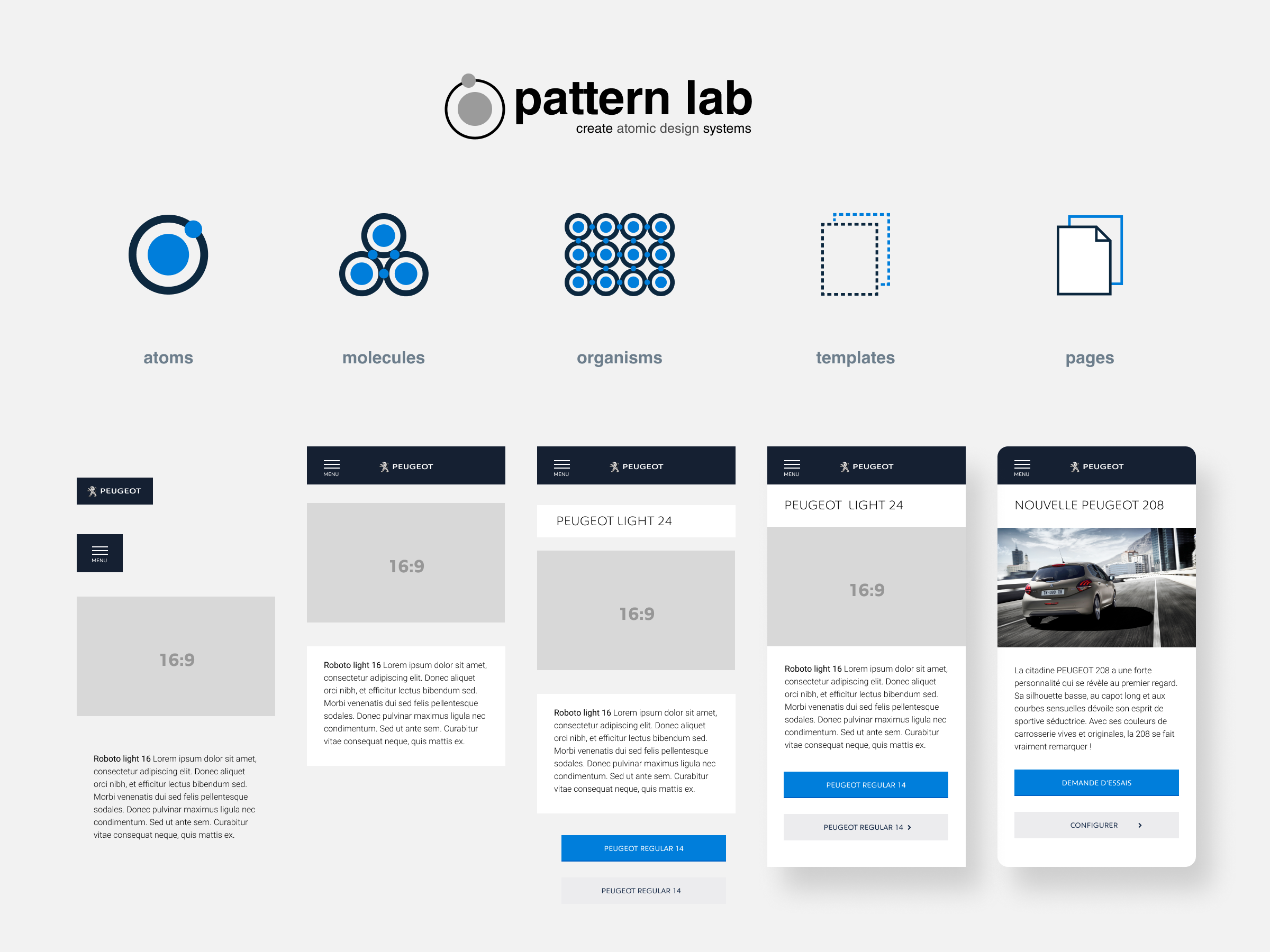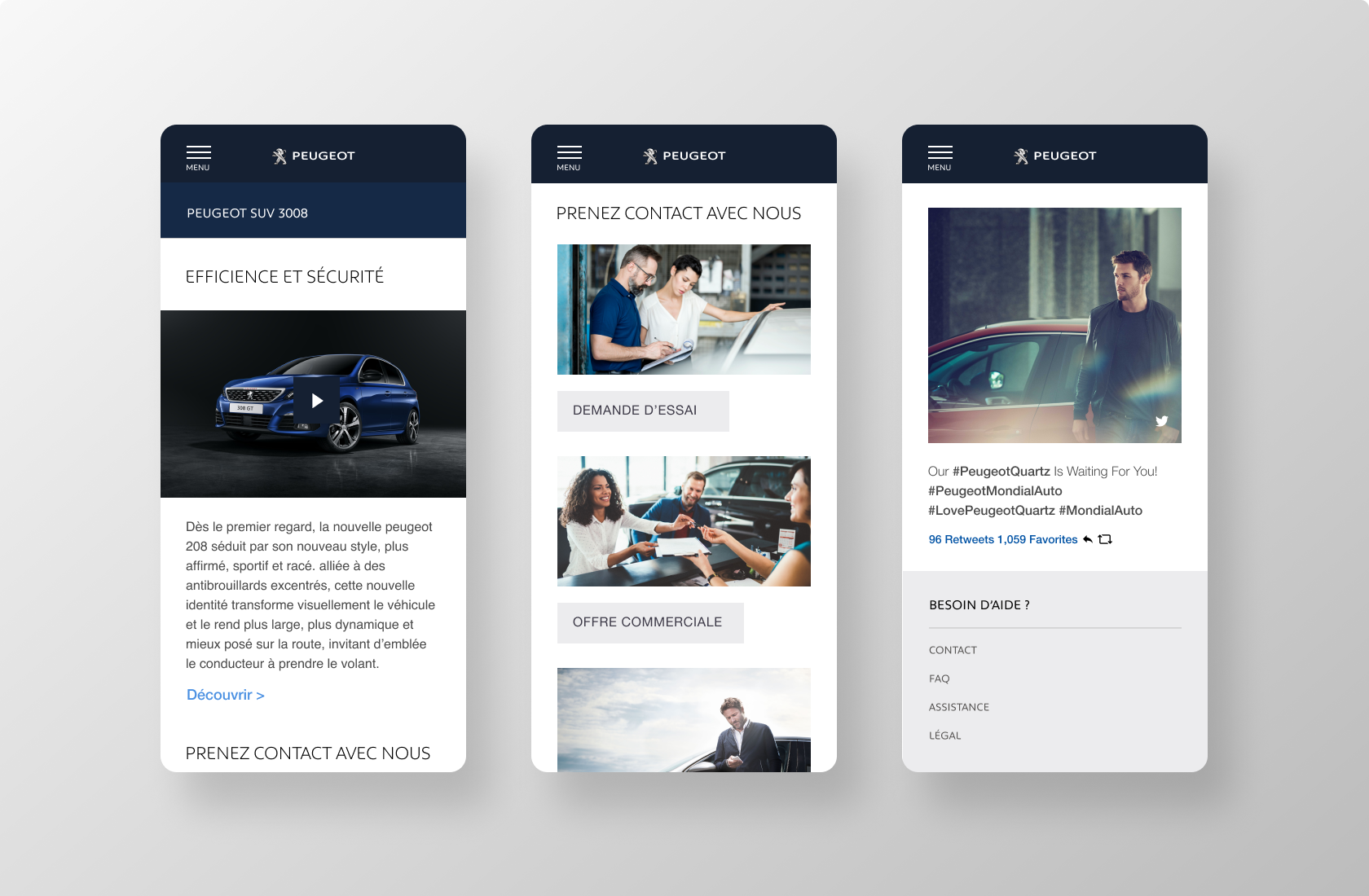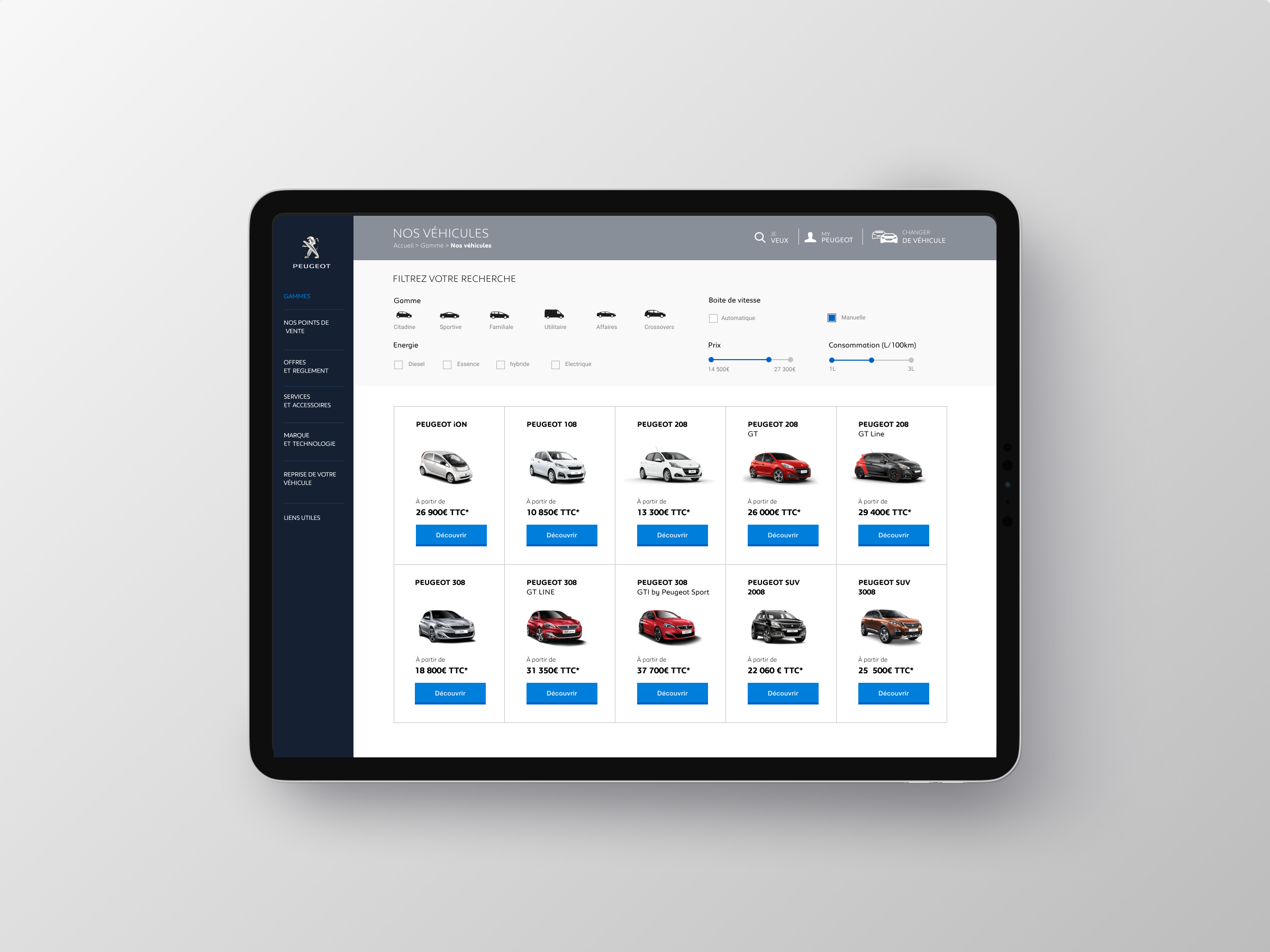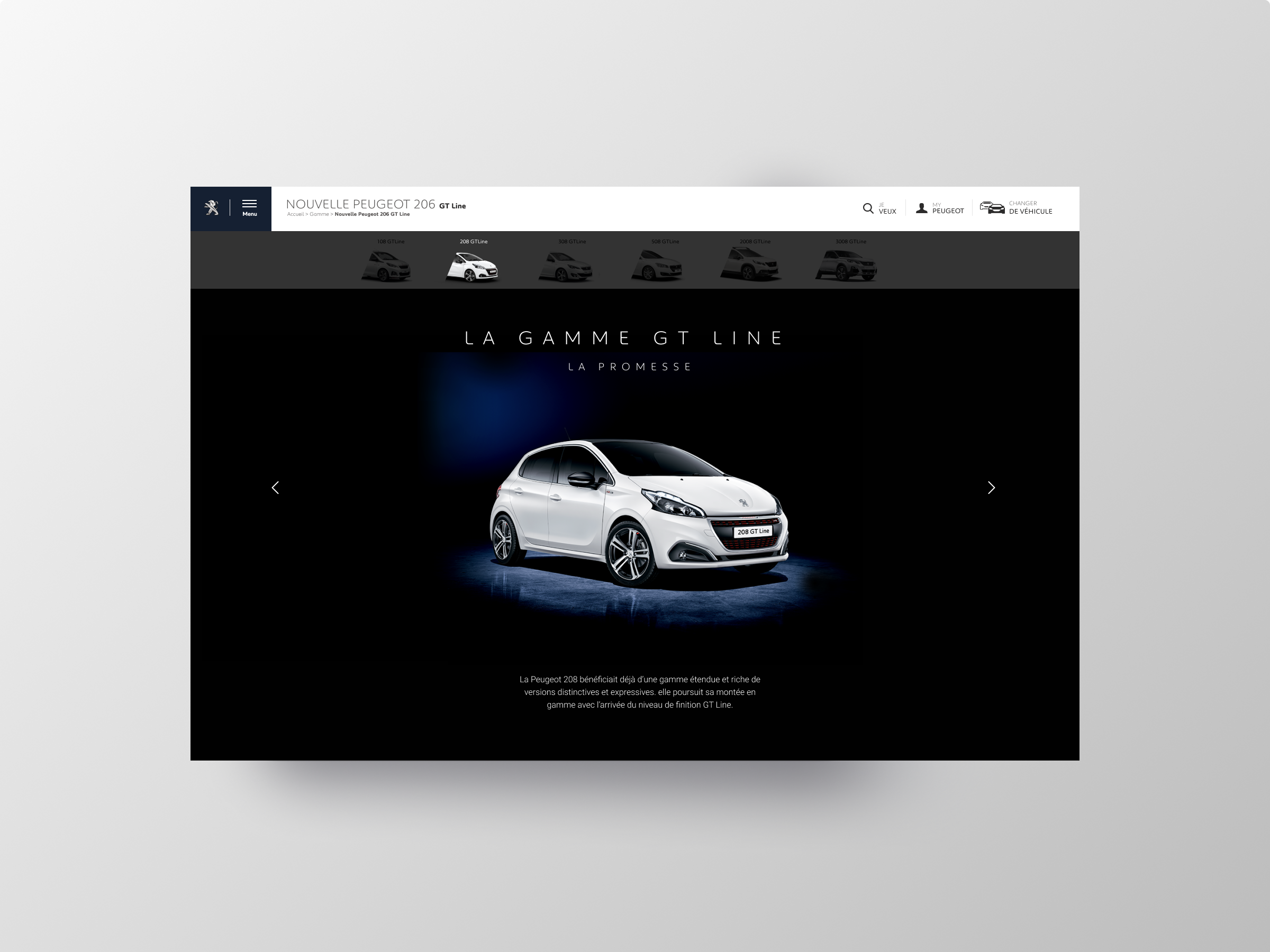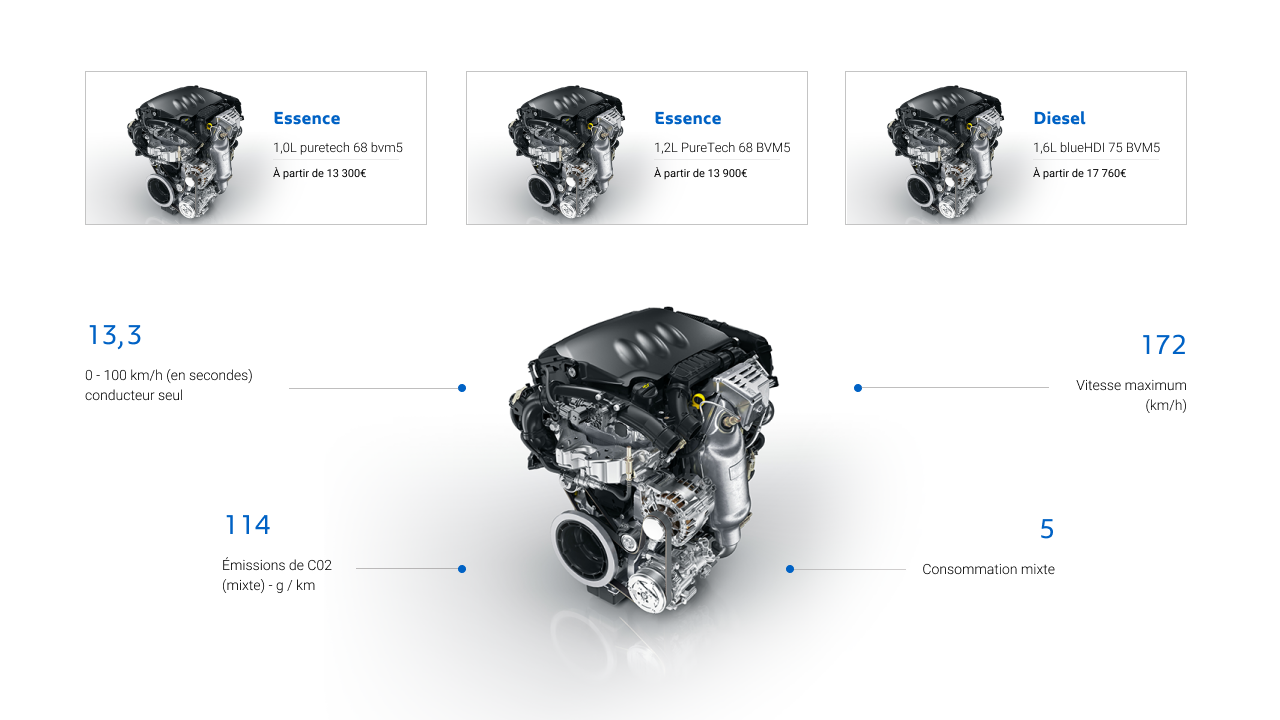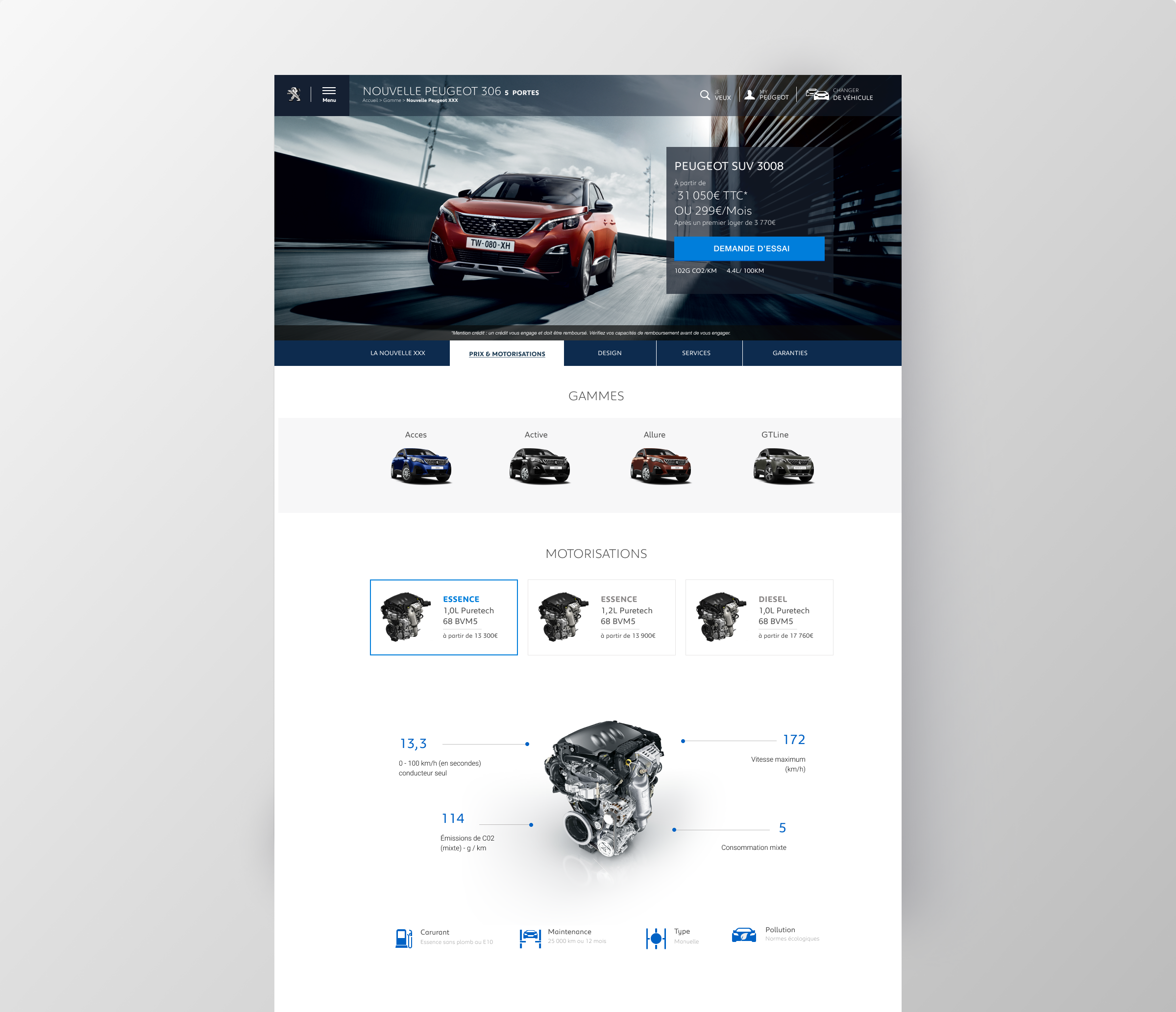Peugeot
New Digital Peugeot
In 2016, the New Digital Peugeot team at PSA , was at the heart of the Peugeot brand's digital transformation. This marked a key period for the automotive industry, faced with major technological changes, such as the rise of connectivity, digital services and digital-centric customer experience.
Context
Changing consumer expectations: consumers were becoming increasingly connected, and expectations in terms of user experience were evolving. Customers were looking for seamless online experiences, personalization options, and integration between online and dealership interactions. PSA needed to offer modern digital platforms to better meet these expectations. Peugeot recognized the importance of customer data and analytics to better understand needs and improve offerings. By digitizing processes, it was possible to better capture and exploit this data, and personalize experiences for each market.
Team
Sprints generally lasted from 5 to 10 days. During this period, the team would focus entirely on a specific problem or objective, such as redesigning a website feature, improving the vehicle configurator, or optimizing the mobile experience. Each sprint began with the definition of a clear, measurable objective. For example, a sprint could be dedicated to improving the conversion rate of website visitors into potential customers, or to simplifying mobile navigation for the vehicle configurator.
Problematic
Platform unification: One of the major objectives was to create a consistent user experience across the different country sites. Each site had to offer the same standards in terms of design, functionality and integration of services (vehicle configurator, after-sales services, etc.), while adapting to local specificities (languages, offers, etc.)Optimizing the user experience: Peugeot wanted to simplify navigation and make the user interface more intuitive. This involved a responsive design (adapted to smartphones and tablets), as well as improvements to the vehicle search, appointment booking and online configuration functionalities.
Solutions
PSA rolled out a new centralized digital platform for its country sites, starting with key markets. This involved: Rebuilding websites: The sites of Peugeot, Citroën, DS Automobiles and other PSA Group brands were redesigned to offer a modernized, mobile-optimized user experience. Localization: Although the platform is unified, PSA has taken care to adapt each site to local specificities (language, culture, vehicle offers and promotions). Personalization: Priority was given to personalizing content according to local habits and preferences. Peugeot used data to adjust visible offers and service proposals on each country site.
Results
Operational efficiency through better management of websites in each country. Customer satisfaction, through a more fluid and personalized experience. Better conversion of leads into sales, thanks to a more intuitive interface and an optimized customer journey.
In summary, PSA's digital transformation in 2016-2017 across its country sites was a crucial initiative to adapt to the new digital era, standardizing the user experience across markets, while optimizing customer engagement via modern, omnichannel solutions.





